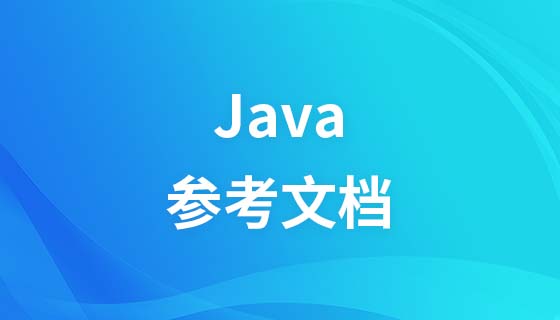
상대적으로 보안 요구 사항이 높은 메시지를 암호화할 때, 제가 여기서 주로 사용하는 알고리즘은 AES 암호화 알고리즘입니다. 국내에서 사용되기 때문에 중국어를 암호화하고 복호화하는 작업은 불가피한 것으로 이 과정에서 아무런 처리도 하지 않으면 중국어 왜곡 문자가 쉽게 나타나는 것으로 밝혀졌다. (권장: java 비디오 튜토리얼)
다음은 일반적인 상황입니다.
1. 중국어 문자가 깨졌습니다.
비밀번호를 인코딩하지 마세요
byte[] decryptResult = decrypt(encryptResult, password);
System.out.println("解密后:" + new String(decryptResult));실행 후
加密前:我是shoneworn 解密后:鎴戞槸shoneworn
2. 텍스트를 인코딩합니다. byte[]를 String으로 급하게 변환하면 String code = new String(bytes); AES 암호화 알고리즘에서는 암호문이 16비트의 배수가 되어야 하기 때문입니다. 따라서 이렇게 처리하면 복호화 시 다양한 오류가 보고됩니다. 다음과 같습니다.
String code = new String(encryptResult); byte[] decryptResult = decrypt(code.getBytes(), password);
AES 암호화는 암호화된 데이터를 String.getBytes() 메소드인 인코딩 형식의 바이트 배열로 변환합니다. getBytes 메소드가 매개변수를 설정하지 않으면 기본적으로 시스템의 기본 인코딩 형식이 사용됩니다. String.getBytes("utf-8") 문제가 해결되었습니다.
rsa 암호화 및 복호화 사용 예:
package com.ailin.test;import java.io.UnsupportedEncodingException;import java.security.InvalidKeyException;import java.security.NoSuchAlgorithmException;import java.security.SecureRandom;import javax.crypto.BadPaddingException;import javax.crypto.Cipher;import javax.crypto.IllegalBlockSizeException;import javax.crypto.KeyGenerator;import javax.crypto.NoSuchPaddingException;import javax.crypto.SecretKey;import javax.crypto.spec.SecretKeySpec;public class AES { /**
* 加密
*
* @param content
* 需要加密的内容
* @param password
* 加密密码
* @return
*/
public static byte[] encrypt(String content, String password) { try {
KeyGenerator kgen = KeyGenerator.getInstance("AES");
kgen.init(128, new SecureRandom(password.getBytes()));
SecretKey secretKey = kgen.generateKey(); byte[] enCodeFormat = secretKey.getEncoded();
SecretKeySpec key = new SecretKeySpec(enCodeFormat, "AES");
Cipher cipher = Cipher.getInstance("AES");// 创建密码器
byte[] byteContent = content.getBytes("utf-8");
cipher.init(Cipher.ENCRYPT_MODE, key);// 初始化
byte[] result = cipher.doFinal(byteContent); return result; // 加密
} catch (NoSuchAlgorithmException e) {
e.printStackTrace();
} catch (NoSuchPaddingException e) {
e.printStackTrace();
} catch (InvalidKeyException e) {
e.printStackTrace();
} catch (UnsupportedEncodingException e) {
e.printStackTrace();
} catch (IllegalBlockSizeException e) {
e.printStackTrace();
} catch (BadPaddingException e) {
e.printStackTrace();
} return null;
} /**
* 解密
*
* @param content
* 待解密内容
* @param password
* 解密密钥
* @return
*/
public static byte[] decrypt(byte[] content, String password) { try {
KeyGenerator kgen = KeyGenerator.getInstance("AES");
kgen.init(128, new SecureRandom(password.getBytes()));
SecretKey secretKey = kgen.generateKey(); byte[] enCodeFormat = secretKey.getEncoded();
SecretKeySpec key = new SecretKeySpec(enCodeFormat, "AES");
Cipher cipher = Cipher.getInstance("AES");// 创建密码器
cipher.init(Cipher.DECRYPT_MODE, key);// 初始化
byte[] result = cipher.doFinal(content); return result; // 加密
} catch (NoSuchAlgorithmException e) {
e.printStackTrace();
} catch (NoSuchPaddingException e) {
e.printStackTrace();
} catch (InvalidKeyException e) {
e.printStackTrace();
} catch (IllegalBlockSizeException e) {
e.printStackTrace();
} catch (BadPaddingException e) {
e.printStackTrace();
} return null;
} /**
* 将二进制转换成16进制
*
* @param buf
* @return
*/
public static String parseByte2HexStr(byte buf[]) {
StringBuffer sb = new StringBuffer(); for (int i = 0; i < buf.length; i++) {
String hex = Integer.toHexString(buf[i] & 0xFF); if (hex.length() == 1) {
hex = '0' + hex;
}
sb.append(hex.toUpperCase());
} return sb.toString();
} /**
* 将16进制转换为二进制
*
* @param hexStr
* @return
*/
public static byte[] parseHexStr2Byte(String hexStr) { if (hexStr.length() < 1) return null; byte[] result = new byte[hexStr.length() / 2]; for (int i = 0; i < hexStr.length() / 2; i++) { int high = Integer.parseInt(hexStr.substring(i * 2, i * 2 + 1), 16); int low = Integer.parseInt(hexStr.substring(i * 2 + 1, i * 2 + 2), 16);
result[i] = (byte) (high * 16 + low);
} return result;
} /**
* 加密
*
* @param content
* 需要加密的内容
* @param password
* 加密密码
* @return
*/
public static byte[] encrypt2(String content, String password) { try {
SecretKeySpec key = new SecretKeySpec(password.getBytes(), "AES");
Cipher cipher = Cipher.getInstance("AES/ECB/NoPadding"); byte[] byteContent = content.getBytes("utf-8");
cipher.init(Cipher.ENCRYPT_MODE, key);// 初始化
byte[] result = cipher.doFinal(byteContent); return result; // 加密
} catch (NoSuchAlgorithmException e) {
e.printStackTrace();
} catch (NoSuchPaddingException e) {
e.printStackTrace();
} catch (InvalidKeyException e) {
e.printStackTrace();
} catch (UnsupportedEncodingException e) {
e.printStackTrace();
} catch (IllegalBlockSizeException e) {
e.printStackTrace();
} catch (BadPaddingException e) {
e.printStackTrace();
} return null;
} public static void main(String[] args) throws UnsupportedEncodingException {
String content = "我是shoneworn";
String password = "12345678"; // 加密
System.out.println("加密前:" + content); byte[] encode = encrypt(content, password);
//传输过程,不转成16进制的字符串,就等着程序崩溃掉吧
String code = parseByte2HexStr(encode);
System.out.println("密文字符串:" + code); byte[] decode = parseHexStr2Byte(code); // 解密
byte[] decryptResult = decrypt(decode, password);
System.out.println("解密后:" + new String(decryptResult, "UTF-8")); //不转码会乱码
}
}더 많은 Java 지식을 보려면 java 기본 튜토리얼 칼럼을 주목하세요.
위 내용은 Java의 rsa 왜곡 문자 소개의 상세 내용입니다. 자세한 내용은 PHP 중국어 웹사이트의 기타 관련 기사를 참조하세요!




